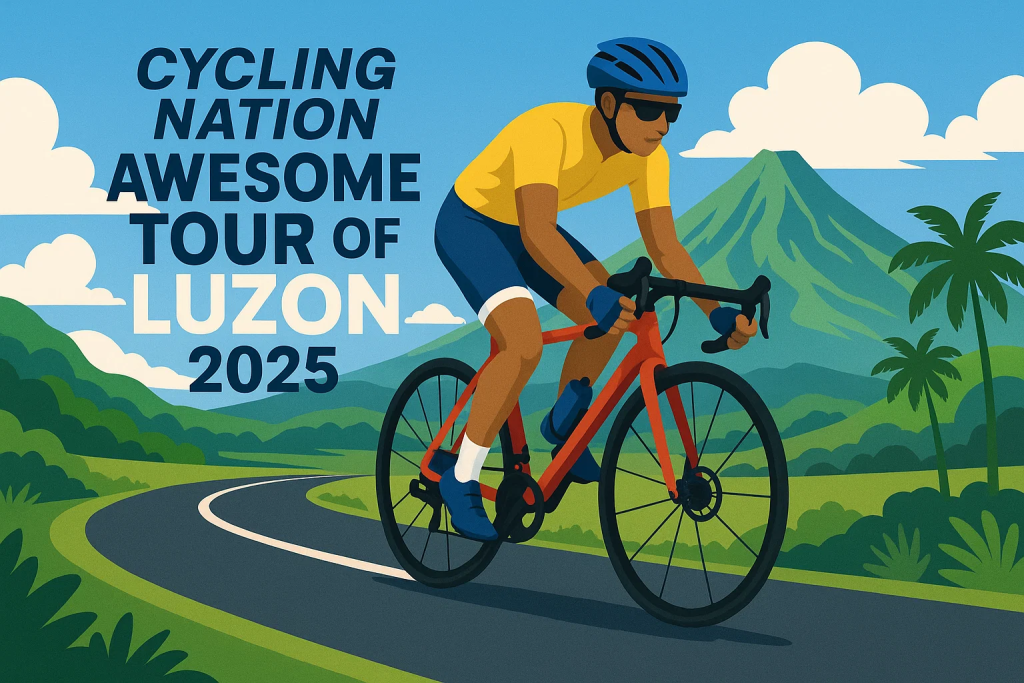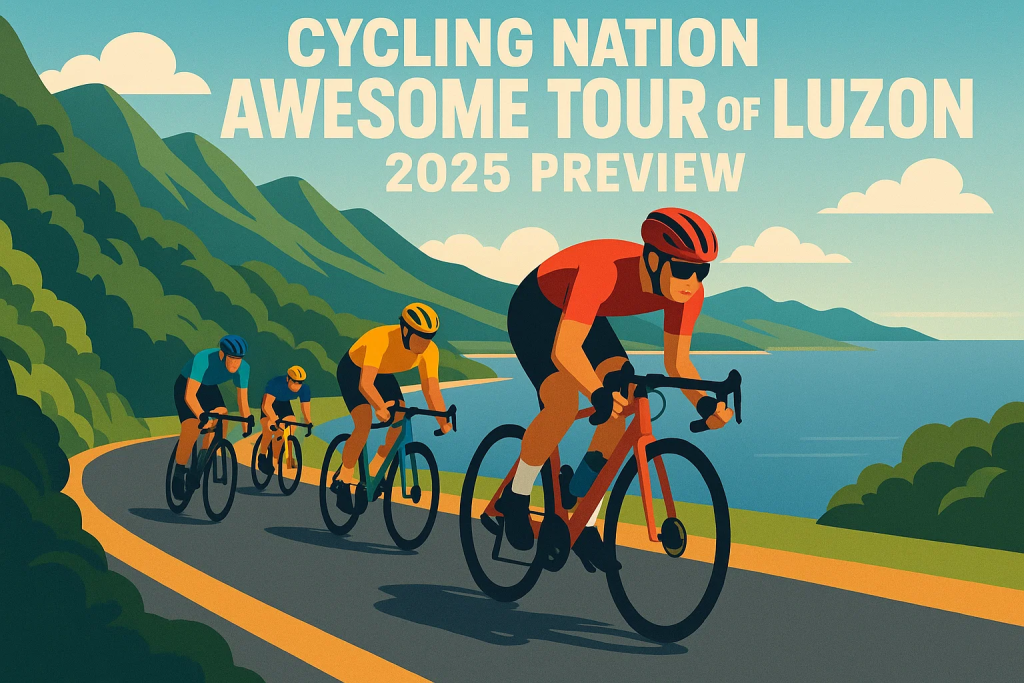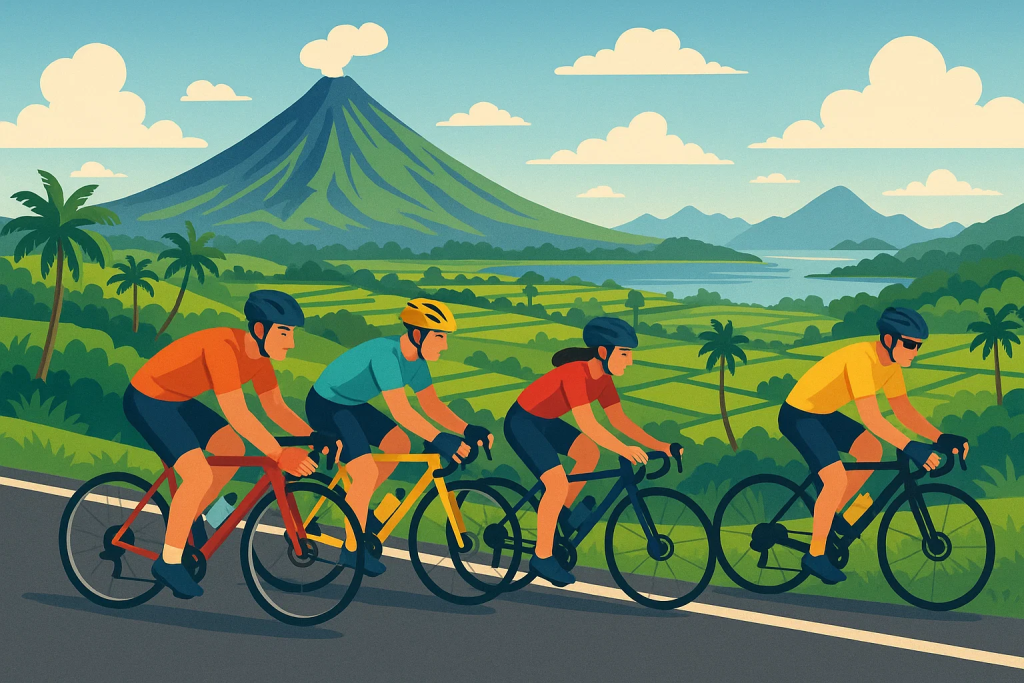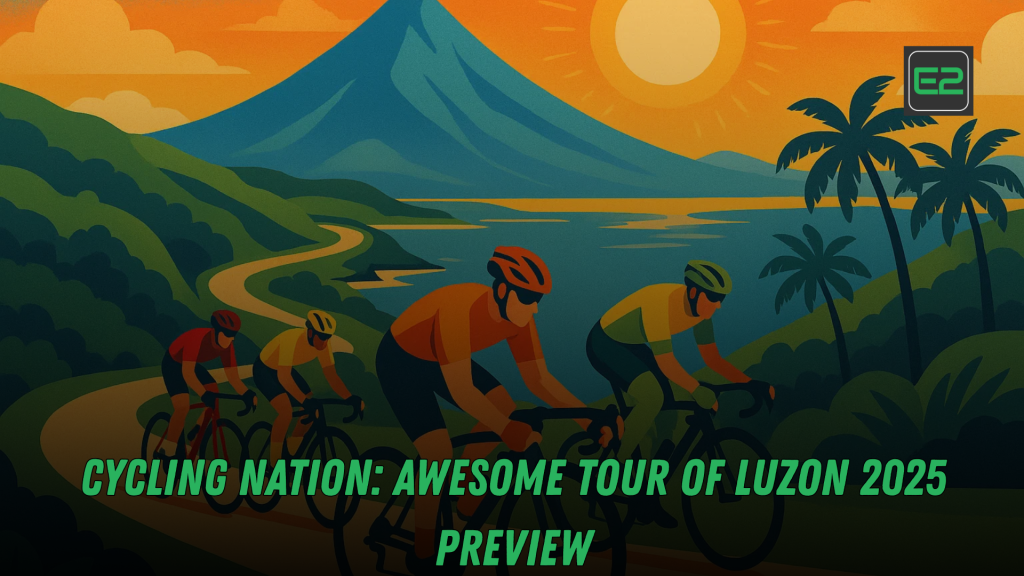Table of Contents
- Tour of Luzon returns after years away: eight stages from April 24 to May 1, 2025, starting in Laoag and finishing at Camp John Hay, Baguio—the event is billed as “The Great Revival.”
- Expect a Laoag opener, a team time trial to Vigan, a flat-to-rolling sprint corridor through La Union and Pampanga, a short ITT in Lingayen, and a decisive Kennon Road summit finish into Baguio.
- 117 riders from 17 teams (including several foreign squads) lined up—putting a true international sheen back on a Filipino stage race mainstay.
- Who’s organizing it? Metro Pacific Tollways Corporation (MPTC) partners with DuckWorld PH and stakeholders across Philippine cycling to restore a classic summer fixture.
This guide walks you through the route, the storylines, who/what to watch, and how to experience the Tour on the ground—plus context on why the comeback matters for the sport.

Backstory: Why the Tour of Luzon’s comeback matters
To longtime fans, Tour of Luzon is more than a race; it’s a summer ritual that anchored the country’s cycling calendar through many incarnations—from the Marlboro Tour era to Ronda Pilipinas and Le Tour de Filipinas. After pandemic-era disruptions and gaps, 2025 marks the revival of a multi-stage race with a national footprint and mainstream backing.
The 2025 edition isn’t just nostalgia. It’s a strategic reset: corporate partners, event pros, and the national federation aligning to build a race product that can attract regional teams, revive grassroots interest, and—if organizers hit their targets—position the event to scale with bigger fields and more complex routes in subsequent years. Early reporting suggests there’s appetite to add teams and stages after the successful return.
Key facts at a glance
- Dates: April 24 – May 1, 2025 (opening activities April 23).
- Start / Finish: Laoag City → Camp John Hay, Baguio (via Kennon Road).
- Stages: Eight (mix of road, criterium-style circuits, TTT/ITT, and a mountain finish).
- Field: 117 riders, 17 teams; reports cited four foreign squads alongside top domestic outfits.
- Notable local teams mentioned: 7-Eleven, Standard Insurance, Go For Gold, Victoria Sports, Excellent Noodles, plus interest from neighboring countries.
- Organizers / Partners: DuckWorld PH, MPTC, with support from PhilCycling and media partners.
Stage-by-stage preview: how the 2025 route shapes the race
Below is a fan-friendly run-through of the 2025 layout as presented in early March briefings. Exact distance/roads can vary on race day due to logistics and safety protocols, but the strategic personality of each stage remains a reliable guide.
Stage 1 — Laoag → Laoag (via Pagudpud Tour)
Profile: Long coastal roads with winds as a wildcard.
Why it matters: A chance for fast men to grab the first leader’s jersey—but crosswinds and narrow bridges can split a complacent peloton. Teams with strong domestiques will keep leaders out of trouble and near the front.
Stage 2 — Laoag → Vigan (Team Time Trial)
Profile: ~80 km TTT along archetypal Ilocos terrain.
Why it matters: TTT gaps stick. A well-drilled squad can bank 20–60 seconds on rivals, forcing GC contenders from weaker teams to attack repeatedly in stages 3–6 just to claw back time.
Stage 3 — Vigan → Agoo
Profile: Fast, flat-to-rolling.
Why it matters: With sprint teams eager to control, time bonuses could swing a tight GC—especially if TTT damage was modest. Wind exposure and heat management become performance deciders.
Stage 4 — Agoo → Clark
Profile: Long transfer into Central Luzon.
Why it matters: A transition battlefield: sprinter teams vs. breakaway artists. Any GC hopefuls caught napping could lose position before the decisive last two days.
Stage 5 — Clark → Clark (New Clark City loop via SCTEX Tour)
Profile: Controlled circuits with highway connectors.
Why it matters: High-speed control favors organized teams; technical sections around turnarounds can split the field. Bonus seconds for the green jersey chase.
Stage 6 — Clark → Lingayen
Profile: Transfer northward, likely a fast line-out.
Why it matters: The last full-gas flat before the GC crunch. Teams with GC ambitions will protect legs and avoid incidents near the finish.
Stage 7 — Lingayen (Individual Time Trial)
Profile: ~30 km ITT.
Why it matters: The truth serum. A poor day here can erase a week of careful wheel-sucking; conversely, an all-rounder can gain a cushion heading into Kennon Road.
Stage 8 — Lingayen → Baguio (Camp John Hay via Kennon Road Tour)
Profile: Mountain finish into CJH; gradients, altitude, switchbacks.
Why it matters: The queen stage and likely the GC decider. Kennon compresses the race into watts-per-kilo and repeated threshold surges. Even a 15–20 second lead before this climb can vanish under a late onslaught.

Teams and riders to watch
Domestic powerhouses and the return of depth
Early lists flagged a who’s-who of local squads (7-Eleven, Standard Insurance, Go For Gold, Victoria Sports, Excellent Noodles), many of which have stage-race experience and time-trial programs vital for a TTT/ITT-laden route. The return of a multi-day race with media heft provides a showcase for development riders to graduate into regional teams.
International flavor
Pre-race coverage noted foreign teams (including national or club squads from Singapore, Indonesia, Thailand), sharpening tactics and raising the overall pace—great news for spectators and a meaningful benchmark for Filipinos targeting UCI points in future editions.
National team names in the mix
ABS-CBN reporting highlighted Filipino national team regulars among the starters—an important signal that the revived tour attracted the country’s top-of-pool riders.
How the GC is (usually) won on this route
- Bank seconds in the TTT (Stage 2): The most efficient squads leave rivals chasing.
- Stay invisible, stay safe (Stages 3–6): Conserve matches; collect sprint/finish bonuses opportunistically.
- Deliver on the TT (Stage 7): Top-5 GC riders must be within a minute of each other after the ITT—anything larger becomes unwieldy on Kennon unless the leader cracks.
- Finish the job on Kennon (Stage 8): Set a high, steady pace early; detonate on the steeps. A properly executed negative split on the climb can flip the GC.
Result footnote: When the dust settled, South Korea’s Joo Dae Yeong edged the overall title by mere seconds—illustrating how TTT/ITT gains and a disciplined mountain defense can win a tight tour.
Why this revival is a big deal for Philippine Tour cycling
- Calendar gravity: A credible, multi-stage race at summer’s heart gives teams, sponsors, and fans a focal point—especially after years of fragmented activity.
- Regional relevance: With foreign teams showing up, local riders get race-craft cross-pollination and a realistic speed benchmark for the Asian circuit.
- Institutional alignment: The MPTC–DuckWorld PH partnership suggests long-horizon planning, not a one-off splash—media visibility and brand equity encourage repeat investment.
- Ambition to scale: Post-race statements teased more teams and stages in the pipeline—a healthy sign for year-on-year growth.
A fan’s guide: how to experience the Tour (safely & memorably)
Pick your vantage points wisely.
- Ilocos Norte coastal roads (Stage 1) offer dramatic backdrops—and crosswind fireworks.
- Vigan heritage streets during TTT day provide a rare chance to see full-team formations at speed.
- Kennon Road (Stage 8) is the place for decisive GC action—arrive early, stay behind barriers, and give riders space on the switchbacks.
Plan for weather and logistics.
Late April into May is hot and often humid; bring water, sun protection, and know your return route before road closures kick in. Flat stages finish fast—expect rolling marshals, lead/follow cars, and temporary chokepoints.
Support responsibly.
Cheer loud, keep pets/kids back from the tarmac, and never push riders or vehicles. If you bring banners or flags, secure them away from barriers and corners.
Travel postcard: make it a Luzon road-trip
- Ilocos (Laoag, Pagudpud): Windswept coastlines and UNESCO-listed architecture frame the race’s early chapters—arrive a day early to explore.
- Vigan: The TTT day gives time to walk Calle Crisologo, sample empanada/okoy, and capture photos before teams roll in.
- Clark / New Clark City: Family-friendly base with plenty of rooms, food options, and a growing sports hub scene.
- Baguio (CJH): The finish at Camp John Hay is tailor-made for a long weekend—cool air, pine trails, and cafés to swap “I-was-there” stories after the podium.
For riders and clubs: training cues mapped to the route
- TTT rehearsal (3–4 weeks out): Dial the start order, pull durations, and rotation etiquette; simulate 80-km efforts with negative splits.
- Heat adaptation: Schedule noon sessions; practice ice stocking and cooling protocols—critical on sprint days.
- ITT pacing: For a ~30-km Lingayen test, calibrate 20–40-minute power; practice corner exits and equipment swaps.
- Climbing economy: Long tempo work and over-unders prep you for Kennon’s whiplash gradient shifts.
Media and sponsor lens: the content & community upside
- Narratives that travel: The “comeback tour” framing, historic place-names, and mountain finale are content-ready hooks for clips and brand storytelling.
- Grassroots activation: Schools, club rides, and watch-zones along stages build participation pathways—use the race week to launch clinics and skills sessions.
- Proof of concept: With 117 riders/17 teams and mainstream coverage, stakeholders now have data to justify bigger budgets in 2026.
Post-race note (for historical completeness)
If you’re reading this after the flag dropped, a key headline from the finish: two-time Korean national champion Joo Dae Yeong sealed the overall by a razor-thin margin after eight stages—an outcome that validates how TTT/ITT plus a controlled mountain ride can decide a one-week tour. Organizers have publicly floated the idea of more teams and more stages next year.
Cheerdance Evolution: How Amazing UP Visayas Innovates Routines
Conclusion
The Tour of Luzon returned in 2025 as an eight-stage “Great Revival” that re-centered Philippine road racing on the national calendar. Running April 24–May 1, the route started in Laoag and finished at Camp John Hay, Baguio, combining coastal crosswinds, Central Luzon sprint corridors, two time trials, and a decisive mountain finish on Kennon Road. The revival carried institutional backing from Metro Pacific Tollways Corporation (MPTC) and DuckWorld PH, signaling long-term ambition rather than a one-off event.
Route & Stage Identity. Stage 1 around Laoag (via Pagudpud) set an immediate crosswind test for sprinters and GC hopefuls. Stage 2’s Laoag–Vigan team time trial (TTT) created the first meaningful GC gaps. Stages 3–6 moved the race through Vigan, La Union, and Clark toward Lingayen, favoring organized sprint teams, breakaway specialists, and heat-adapted riders while GC favorites conserved energy. Stage 7’s individual time trial (ITT) in Lingayen served as the “truth serum,” clarifying the leaderboard before the queen stage. Stage 8 climbed Kennon Road to Baguio’s Camp John Hay, where watts-per-kilo, pacing, and altitude tolerance decided the overall.

Field & Competitive Texture. The race assembled 117 riders from 17 teams, including several foreign squads that raised race speed and tactical complexity. Philippine stalwarts—7-Eleven, Standard Insurance, Go For Gold, Victoria Sports, Excellent Noodles—and national-team regulars anchored the domestic challenge. The route’s balance rewarded all-rounders with TTT/ITT proficiency and reliable climbing, while sprint teams hunted bonuses that could tilt a tight GC.
How the GC Was Won. The textbook path to victory: bank seconds in the Stage 2 TTT; stay upright, hydrated, and opportunistic through the hot, fast middle stages; deliver a top ITT in Stage 7; then defend or overturn the lead on Kennon Road. In the end, Korea’s Joo Dae Yeong edged the overall by mere seconds—a case study in combining aero gains from TTT/ITT with controlled damage on the climb.
Why the Comeback Matters. The Tour restores “calendar gravity” for teams, sponsors, and fans, strengthens regional relevance by attracting foreign squads, and demonstrates institutional alignment that can compound investment. Organizers have already hinted at scaling up teams and stages in future editions, using 2025’s data as proof of concept.
Fan Experience & Travel. Spectators were encouraged to pick vantage points with character and safety—Ilocos coastal sections for crosswinds, Vigan’s TTT for team formations, and Kennon’s switchbacks for GC drama—while planning for heat, closures, and safe cheering. The route doubled as a Luzon travel postcard: Laoag/Pagudpud’s coastlines, Vigan heritage streets (and empanada), Clark’s family-friendly base, and Baguio’s cool finish at CJH.
Coaching & Content Angles. Clubs could map training blocks to the route (TTT rehearsals, heat adaptation, ITT pacing, climbing over-unders). For brands and media, the comeback narrative, heritage place-names, and mountain finale created ready-made storytelling. Community activations—watch zones, clinics, school rides—helped translate spectacle into participation.
Bottom Line. Tour of Luzon 2025 proved that Philippine stage racing is back with a route that rewards brains and legs. It rekindled national pride, attracted international interest, and set the stage for a bigger, faster, and more deeply rooted edition ahead.
Strong call-to-action
Fans: Tell us which stage you’re most excited to watch and what your GC podium looks like—drop predictions in the comments.
Local clubs & schools: Use race week as a rallying point—host a beginner ride, a bike-skills clinic, or a safe spectating workshop.
Brands: If your audience skews active/outdoors, the Tour’s revival is a low-friction entry point to support community cycling—start with aid tents, hydration, or neutral support on fan zones.
Frequently Asked Questions (FAQs)
1) When is the Tour of Luzon 2025 and how many stages does it have?
2) How big was the field in 2025?
3) Which stages most influenced the overall (GC) battle?
4) Who organized and supported the 2025 revival?
Whether you’re a die-hard fan, a weekend rider, or a brand eyeing authentic community moments, the Tour of Luzon 2025 marks a line in the sand: Philippine stage racing is back—with a route that rewards brains and legs, and a revival story that’s easy to get behind.
